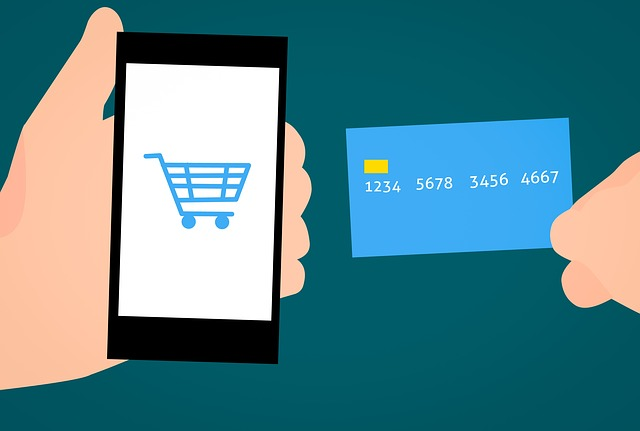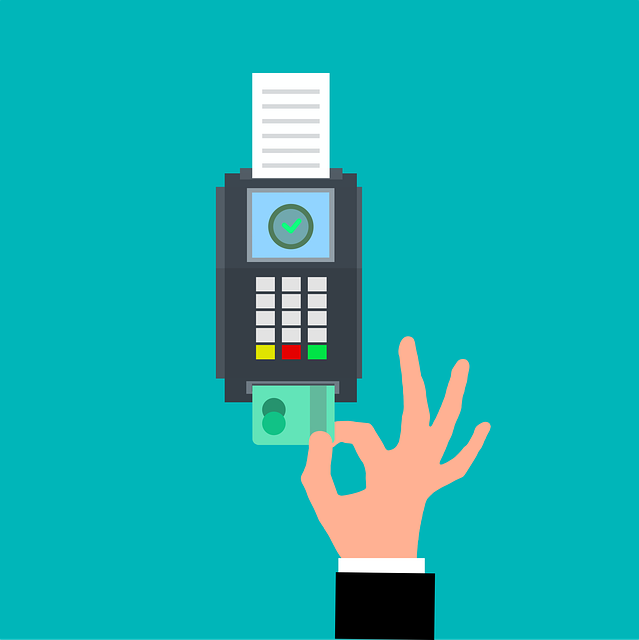We’ll increase conversions by
20-100+%
on your website.
Get a FREE Audit today
See how we can help your business increase conversion rates
The Ultimate Guide To Checkout Optimization: 10 Best Practices For A Seamless ECommerce Experience

Introduction
Welcome to the world of eCommerce, where convenience is king and online shopping has become a popular choice for many. But as an eCommerce business owner, have you ever wondered what’s stopping shoppers from completing their purchases on your ecommerce site well? In this blog post, we’ll dive into the checkout optimization process and discuss 10 best practices that will help create a seamless eCommerce experience for your customers. So buckle up, because we’re about to embark on an amazing journey that has the potential to revolutionize your online store! Read on to discover how these tips can impact not only your conversion rates but also enhance customer satisfaction while boosting revenue.
Why Focus On Checkout Optimization?

Checkout optimization is a critical aspect of eCommerce that can make or break a customer’s experience, and it involves streamlining the checkout process to provide customers with a seamless and hassle-free shopping experience that will increase revenue while reducing abandoned orders.
What Is Checkout Optimization?
The definition of checkout optimization refers to the process of improving and streamlining an eCommerce website’s entire checkout process, from adding items to the cart until the final transaction is completed. By making it easier for customers to complete their purchases online, businesses can enhance user experience, reduce instances of abandoned carts, and ultimately increase sales.
Checkout optimization involves a range of tactics such as simplifying layouts, providing clear product information, offering guest checkout options, ensuring mobile responsiveness, and incorporating various security measures. When effectively implemented as part of an overall eCommerce strategy, these best practices help improve conversion rates while bolstering customer retention across all stages of your sales funnel. If you’re interested in a best practices package, we offer this as part of our services for conversion rate optimization.
What Are The Benefits Of A Seamless ECommerce Checkout Process?
A seamless eCommerce checkout experience offers numerous advantages for both businesses and customers. One significant benefit is the increased likelihood of completed transactions, as a smooth and efficient process encourages shoppers to complete their purchases without any unnecessary friction or delays. By reducing abandoned carts, online retailers can directly boost their revenue and enhance customer satisfaction.
Streamlining the ecommerce checkout page and process enhances user experience, which can lead to loyal customers who return for repeat purchases. A well-designed user interface helps establish trust between eCommerce brands and their consumers by demonstrating that the business values its customers’ time and convenience. Additionally, improved customer trust often translates into higher conversion rates and positive word-of-mouth referrals – both of which are invaluable in helping businesses grow their online presence.
Offering a seamless eCommerce checkout also goes hand-in-hand with mobile optimization, ensuring that users have an enjoyable shopping experience across various devices. As more people increasingly rely on smartphones for shopping online, providing a fluid mobile-friendly checkout process becomes essential in capturing this growing market segment. Furthermore, creating a universal design that caters to different platforms bolsters brand consistency while extending reach to potential international customers through high-end user experiences tailored for diverse audiences around the world.
Top 10 Best Practices For Checkout Optimization

Discover the 10 essential best practices for optimizing your eCommerce checkout process, from providing clear product information to offering multiple payment options and free shipping – all designed to help you improve conversion rates, boost sales, and retain customers. Keep reading to learn more!
Simplify The Checkout Process
Simplifying the checkout process is a crucial aspect of optimizing the eCommerce experience. By reducing the steps required to complete an order, businesses can significantly reduce cart abandonment rates and improve conversion rates. One best practice for simplifying the checkout process is to limit the amount of required fields that customers need to fill out, ensuring that only relevant information is requested.
Another way to simplify typical checkout process is by offering guest checkout options. Many customers abandon their carts due to being forced to create an account before completing their purchase. By offering a seamless guest checkout option, businesses can provide a more streamlined experience for their customers and potentially increase sales as well. These are just two examples of how simplifying the checkout process can lead to higher customer satisfaction and ultimately increased revenue for ecommerce businesses.
Offer Guest Checkout Options
Offering a guest checkout option is an essential best practice for optimizing the checkout process in eCommerce. By providing customers with the choice to enter as little information as possible and head straight to checkout, you effectively streamline their experience, which increases customer satisfaction and conversion rates. With this option, users don’t need to create an account or fill out lengthy forms, making it more likely they’ll follow through with their purchase.
However, keep in mind that despite offering the guest checkout option, many customers may still prefer to sign up for an account. Therefore, giving them both options ensures everyone’s needs are catered to. To optimize your checkout page further, ensure you have clear order details throughout the process and offer several payment options while simplifying delivery choices. This way will make it easier for customers to proceed smoothly through each step of your sales funnel without any hiccups.
Provide Clear Product Information
Providing clear and accurate product information is crucial during the checkout process. Customers want to know exactly what they are purchasing, including its features, benefits, and any potential drawbacks. Failing to provide this information can lead to confusion or frustration, causing customers to abandon their cart altogether.
To ensure a smooth checkout experience that leads to higher conversion rates and revenue, make sure all product descriptions are comprehensive and easy-to-understand. Include high-quality images or videos of the product from different angles, highlighting its unique features. By providing clear product information throughout the checkout process, customers will feel confident in their purchase decision.
In addition, it’s important to keep in mind that customers might have specific questions about a particular product before making the final purchase. Make it easy for them to get answers by including a live chat option or an FAQ section on your website where common questions are answered clearly and concisely. By doing so, you’ll show that you care about customer satisfaction while also reducing the chance of cart abandonment due to unanswered questions or concerns.
Ensure Mobile Responsiveness
Mobile shopping has become increasingly popular over the years, which means it’s crucial to ensure that checkout pages are optimized for mobile devices. This is where mobile responsiveness comes into play. Websites that aren’t responsive have trouble adapting to different screen sizes and may require users to zoom in or out on their screens, leading to a poor user experience.
One of the best practices for checkout optimization is ensuring mobile responsiveness. By doing so, you make sure your website design adapts smoothly across various platforms and screen sizes, providing a better experience for all customers. Implementing responsive web design also allows businesses to take advantage of native features found on mobile devices like location-based services, social media sharing options, etc., thereby enhancing user engagement with your brand.
In today’s digital landscape where close to 68% of online shoppers use smartphones to purchase products or services, having a seamless checkout process optimally designed for mobile devices can significantly impact conversion rates by reducing abandonment levels and increase customer satisfaction- ultimately driving revenue growth upwards.
Streamline Form Fields
One critical aspect of checkout optimization is streamlining form fields to provide a seamless shopping experience for customers. The fewer the number of form fields, the better it is for conversion rates as customers tend to abandon their carts when asked to fill out lengthy forms. Brands should only request essential information and utilize auto-fill options where appropriate.
Offering alternative payment methods such as PayPal or Apple Pay can streamline the checkout process and reduce cart abandonment even further. Research suggests that 59% of shoppers will abandon their carts if their preferred payment method isn’t available at checkout, making it crucial for brands to offer multiple options. Implementing these best practices significantly improves user experience and site performance, ultimately leading to higher sales volumes for your e-commerce store.
Include Progress Indicators
One of the best practices for optimizing eCommerce checkout is to include a progress bar or indicators. This helps to streamline the process and provides users with a clear understanding of what stage they are at in the checkout process. Progress bars or percentage trackers are effective ways to reduce cart abandonment rates and provide a better user experience.
Including checkout progress indicators can also help businesses make data-driven decisions about their optimization strategies. Tracking how customers move through the checkout process allows brands to identify any areas where customers may be dropping off and make necessary improvements. By incorporating progress indicators into your checkout design, you can improve conversion rates, enhance customer satisfaction, and ultimately drive more sales for your business.
Display Trust Badges And Security Measures

Displaying trust badges and security measures in the checkout process is essential for creating a trustworthy and secure ecommerce experience. Trust signals, such as SSL certificates and website authentication, are crucial for building customer confidence during digital transactions. These trust signals also improve credibility, brand recognition, reputation, and consumer trust.
To optimize the checkout process, it’s important to prominently display trust badges and security measures throughout the entire transaction. Providing clear information about security protocols like data encryption, privacy policies, fraud prevention techniques will create a sense of reliability while minimizing hesitancy among customers. Incorporating these best practices into your ecommerce store can help increase conversion rates while providing a seamless online shopping experience.
Offer Multiple Payment Options
Offering multiple payment options is crucial to checkout optimization in eCommerce. Customers expect flexibility and convenience when it comes to online shopping, especially when it comes to payments. By providing global payment options like credit card processing, digital wallets, and alternative payments, retailers can cater to a broader audience and increase their conversion rates.
In addition to offering multiple payment options, retailers should ensure that the checkout process is secure for customers. SSL certificates and fraud protection measures are essential for establishing trust with shoppers during the checkout process. Retailers should also consider offering one-click checkout or saved payment information for returning customers to streamline future purchases.
Ultimately, optimizing the checkout process by providing flexible and secure payment options can lead to happier customers who are more likely to complete their purchase without abandoning their shopping cart.
Provide Free Shipping And Returns
Offering free shipping and returns is one of the best practices for optimizing the ecommerce checkout experience. In fact, studies show that customers are more likely to complete a purchase if free shipping is offered. By providing this extra incentive, you can increase online sales and improve customer satisfaction. Furthermore, offering free returns can also help build trust with customers by showing them that you stand behind your products.
When implementing free shipping and returns, it’s important to consider options for delivery speed as well. Giving customers choices in how quickly they want their order delivered can further enhance the user experience. Additionally, including an estimated shipping date in exchange for free shipping can be a great way to manage expectations and reduce cart abandonment rates. Overall, providing these benefits as part of your checkout optimization strategy can significantly improve conversions and drive customer loyalty.
Test And Optimize Regularly
Testing and optimizing your checkout process regularly is crucial to ensure that it’s performing at its best. By doing regular testing, you can discover any issues in the process that may be causing customers to abandon their carts, and make necessary changes to improve the experience. Implementing A/B testing can also help determine which design or content optimizations are most effective in increasing conversions.
Regularly optimizing also means staying up-to-date with new trends and technologies that could enhance the checkout experience for your customers. For example, ensuring mobile optimization is critical since many shoppers use their phones to browse and purchase products online. By providing a seamless mobile checkout and purchasing experience through regular testing and optimization, you increase your chances of converting users into loyal customers who will return for future purchases.
Additional Strategies For Optimizing Checkout

In addition to the top 10 best practices for checkout optimization, there are various other strategies that can be used to enhance the eCommerce experience such as integrating personalized recommendations, providing live chat support, implementing exit-intent popups, optimizing for international customers and offering a loyalty program.
Integrate Personalized Recommendations
Integrating personalized recommendations is a valuable strategy for optimizing eCommerce checkout. By suggesting additional products that complement what the customer has already chosen, you can increase the chances of upselling and cross-selling. This approach also improves the user experience by providing relevant options, saving customers time and effort in searching for complementary items.
Personalized recommendations provide a more tailored shopping experience, which ultimately leads to increased conversion rates. Studies have shown that 45% of shoppers are more likely to purchase from a site that offers personalized recommendations. Utilizing this strategy not only drives sales but can also create loyal customers as they feel understood and catered to throughout their entire journey on your website.
Provide Live Chat Support
Providing live chat support is becoming increasingly important for online businesses looking to optimize their ecommerce checkout process. By offering real-time assistance, businesses can address customer questions and concerns quickly, leading to increased satisfaction and reduced cart abandonment rates. In fact, according to a study by Forrester Research, 44% of customers stated that having access to live chat during an online purchase was one of the most important features a website could offer.
If implementing live chat support is not possible for your business, including order numbers and contact information on the checkout page can also be helpful in reassuring customers that they can easily reach out with any questions or issues they may encounter. This simple addition can increase transparency and trust between the business and its customers, ultimately leading to a more seamless ecommerce experience.
Offer A Loyalty Program
Offering a loyalty program is one way to optimize your eCommerce checkout process. A rewards program can incentivize customers to continue shopping with your business and improve retention rates. By offering exclusive benefits, such as free shipping or discounts, you can create a loyal customer base that is more likely to return for future purchases.
Implementing a loyalty program also allows for better tracking of customer behavior and preferences, allowing businesses to personalize their recommendations and provide more targeted promotions. This approach increases the likelihood of conversion, leading to increased revenue for the company in the long run. Overall, offering a loyalty program as part of optimizing your checkout experience can be an effective strategy for building trust and creating returning customers.
Implement Exit-Intent Popups
One of the most effective solutions for shopping cart abandonment is implementing exit-intent pop-ups. By using behavioral targeting, these pop-ups are triggered when users show signs of leaving without completing their purchase. These targeted reminders of checkout abandonment can help convert leaving customers into paying ones by reminding them of products left in their cart.
Aside from product reminders, exit-intent pop-ups can also be used to communicate incentives to customers in a final attempt to get them to stay. Incentives such as free shipping or a discount code can encourage hesitant customers to complete their purchase and increase conversion rates. Implementing exit-intent pop-ups is one of the best practices for optimizing checkout in ecommerce and should not be overlooked in any marketing strategy aiming towards improving customer engagement and retention.
Optimize For International Customers
When optimizing the checkout process for eCommerce, it’s essential to consider international customers. To optimize for international sales, businesses must provide multiple payment options and display prices in local currencies. These strategies can help build trust with customers by offering them a familiar and convenient shopping experience.
One way to optimize for international customers is to provide clear information about shipping fees and taxes upfront. This transparency will reassure customers and help avoid any unexpected charges during the checkout process, reducing cart abandonment rates. Additionally, businesses should ensure that their website is translated into different languages so that foreign customers can easily understand product descriptions and other critical information.
Common Checkout Mistakes To Avoid

Avoid making the checkout process lengthy, hiding fees and charges, lacking transparency, including complicated forms, or creating cluttered and confusing checkout pages.
Lengthy Checkout Processes
One of the most common checkout mistakes to avoid is a lengthy and complicated checkout process. Online shoppers want a seamless and easy experience, and a long checkout can lead to frustration, cart abandonment, and lost sales. By simplifying the steps required for customers to complete their purchase, you can reduce abandonment rates and increase conversions.
According to research by Baymard Institute, reducing the number of form fields from 15 to 10 can improve conversion rates by up to 34%. To streamline your checkout process further, consider offering one-click or express checkout options that save customer data for future purchases. By minimizing the time it takes for customers to complete their purchase, you can provide them with a stress-free experience that encourages repeat business.
Hidden Fees And Charges
Hidden fees and charges can be a major turn-off for customers at checkout. These unexpected costs can lead to abandoned carts, lost sales, and negative reviews for ecommerce stores. To avoid this common mistake, it’s important to have clear and transparent pricing throughout the checkout process. Make sure that all taxes, shipping fees, and other charges are clearly displayed before allowing customers to enter their payment information.
In addition to transparency in pricing, offering free shipping or discounts on larger orders can also help alleviate concerns about hidden costs. Customers will appreciate knowing exactly what they’ll be paying upfront without worrying about any surprises later on. By prioritizing transparency in your checkout process, you can build trust with your customers and increase the likelihood of repeat business.
Lack Of Transparency
One of the major issues that hinder successful checkout optimization in eCommerce is a lack of transparency. It’s crucial to be transparent about all costs, including shipping fees and taxes, upfront on product pages so customers aren’t hit with hidden charges at the end. According to a study by Baymard Institute, 60% of online shoppers abandoned their cart due to unexpected costs at checkout.
Another important aspect of transparency is providing clear delivery information and shipping address. Customers want to know when they can expect their products and if there are any delays or issues with shipping. Providing this information upfront builds trust with customers and protects against negative reviews that could impact future sales.
Overall, it’s essential for eCommerce stores to prioritize transparency in checkout optimization strategies. By being upfront about all costs and providing clear delivery information, stores can reduce cart abandonment rates and improve the overall customer experience.
Complicated Forms
Complicated forms are one of the most common checkout mistakes to avoid. Long and confusing forms can frustrate customers, causing them to abandon their carts mid-purchase. To optimize your checkout flow, streamline your form fields by only asking for essential information such as name, address, email, and payment details.
Another way to simplify complicated forms is by implementing autofill features or providing dropdown menus for easy selection. By simplifying the form filling process, you’ll create a more user-friendly experience that leads to higher customer satisfaction rates and improved conversion rates for your e-commerce store.
Cluttered And Confusing Checkout Pages
Avoiding cluttered and confusing checkout pages should be a top priority for eCommerce brands. Customers are looking for an easy and seamless checkout experience, and poor design can lead to frustration and cart abandonment. Research shows that 28% of shoppers abandon their carts due to complicated checkout processes or hidden fees. Asymmetry, information overload, and lack of design consistency can all contribute to an unpleasant user interface.
To keep customers engaged during the checkout process, it’s important to maintain a clean design with clear call-to-action buttons. Streamlining form fields by only asking for essential information is another best practice that prevents clutter on the page. Additionally, providing product details with high-quality images helps consumers make more informed purchasing decisions while keeping the page organized without too much text or visual noise on single page.
Measuring And Analyzing Checkout Success

To ensure the checkout process is fully optimized, it’s important to measure and analyze key metrics such as cart abandonment rate, conversion rate, and average order value using tools like Google Analytics or Kissmetrics.
Key Metrics To Track
In ecommerce, it’s important to track key metrics to measure and analyze checkout success. Metrics such as conversion rate, abandonment rate, customer lifetime value, and customer acquisition cost are essential in evaluating the performance of an online store. By tracking these metrics regularly, businesses can make informed decisions on how to optimize their checkout process for better results.
Cart abandonment is a significant challenge for ecommerce businesses. One way to reduce abandonment rates is by keeping track of key metrics such as exit pages and funnel drop-offs. Through data analysis, companies can identify common issues in their checkout process and take steps to address them. Additionally, monitoring key performance indicators like sales revenue from returning customers or average order value can help with growth strategies and decisions related to marketing investments.
Tools For Tracking And Analyzing Checkout Performance
Tracking and analyzing checkout performance is essential for understanding the effectiveness of an eCommerce website’s checkout process. The metrics that organizations can track vary, but some include cart abandonment rate, transaction completion rate, user flow analysis, conversion rate, and various other key performance indicators. With these tools in place, businesses can obtain an accurate view of their eCommerce website and checkout experience’s overall health and identify areas for optimization.
There are a variety of tools available to help organizations optimize their checkout experience after gathering data on customer behavior during the checkout process. These tools range from analytics platforms like Google Analytics or Adobe Analytics to specialized solutions like Optimizely or Lucky Orange. By leveraging these tools’ capabilities, organizations can personalize their customers’ shopping experience through targeted advertising campaigns, analyze conversion rates by device type or country location data – among other factors – and improve the relationships between ecommerce managers and developers working together toward optimizing conversions over-time with iterative updates.
Making Data-Driven Improvements
In the competitive world of ecommerce, it is vital to make data-driven improvements to optimize the checkout experience. Businesses can track key metrics such as conversion rates, average order value, and customer acquisition costs using analytics tools like Google Analytics. With this data in hand, businesses can identify potential points of improvement and prioritize their efforts accordingly.
For instance, high cart abandonment rates could indicate a lack of trust in the checkout process or unexpected shipping costs. By making data-driven improvements such as adding trust badges single page checkout, or offering free shipping options for specific order thresholds or promoting discount codes on transactional emails can help reduce cart abandonment rates leading to increased sales revenue.
In conclusion, data analysis should be an integral part of optimizing the checkout process for ecommerce stores. It enables businesses to measure success and fine-tune strategies based on real-time information to improve user experience and increase revenue optimization.
Integration With Marketing Strategies

Integrating marketing strategies with checkout optimization can help enhance customer retention and increase revenue through follow-up email campaigns, social media integration, personalized recommendations, and cart abandonment recovery techniques.
Follow-Up Emails And Campaigns
Follow-up emails and campaigns are crucial components of e-commerce marketing strategies. These automated emails can help build relationships with customers, encourage repeat purchases, and ultimately drive more sales. For best results, it’s important to segment mailing lists based on customer behavior and preferences.
A welcome email is the perfect opportunity to introduce new customers to your brand and incentivize them to make their first purchase. Offering a discount code or free shipping can be an effective tactic for increasing conversions. Additionally, cart abandonment recovery email campaigns can target customers who have left items in their carts without completing a purchase – reminding them of what they left behind may be just the push they need to complete their order.
Social Media Integration
Social media integration should be a crucial aspect of any marketing strategy for e-commerce businesses. By leveraging social media platforms like Facebook, Instagram, and Twitter, businesses can increase brand awareness and reach their target audience more effectively. Integrating social media into an online store can also help with sales generation by making it easier for customers to share products they like with their followers.
To ensure success in integrating social media into an e-commerce website, businesses must use the right tools and tactics. Paid advertising on social media is one way to reach a wider audience through targeted campaigns. Additionally, using SEO best practices can help boost search engine rankings and generate more traffic to the site from organic searches.
Personalized Recommendations
Personalized recommendations are a powerful tool for eCommerce businesses looking to optimize their checkout process. By leveraging behavioral data and predictive analytics, companies can deliver tailored product suggestions that resonate with individual customers. This targeted marketing approach not only improves the user experience but also increases conversion rates and drives customer loyalty.
Integrating personalized recommendations into marketing strategies is key in creating an effective customer journey. By mapping out the user journey and strategically placing personalized content throughout, businesses can nurture prospects and guide them towards making a purchase. This can include offering upsell or cross-sell suggestions based on the items they’ve added to their cart or displaying dynamic content that changes based on their interactions with the site.
Cart Abandonment Recovery
One of the biggest challenges faced by e-commerce stores is cart abandonment. According to recent statistics, the average abandonment rate is a whopping 69%. This means that almost 7 out of every 10 customers leave without making a purchase. Cart recovery software has emerged as an effective solution to recover sales.
By using behavioral targeting and exit intent popups, cart recovery programs can identify customers who have abandoned their carts and send personalized emails with relevant product recommendations. Remarketing campaigns and social media integration can also be used to re-engage potential customers and bring them back to complete their purchases. With such efforts in place, businesses are better positioned to increase conversions, retain customer loyalty and minimize revenue loss due to abandoned carts.
Conclusion: Prioritizing Checkout Optimization For A Seamless ECommerce Experience

In the highly competitive world of eCommerce, providing a seamless checkout experience is essential for driving conversions and increasing revenue. By implementing the 10 best practices outlined in this guide, businesses can optimize their checkout process and provide customers with an experience that is streamlined and stress-free.
From simplifying form fields to offering personalized recommendations, every step in the process should be designed with the customer in mind. By prioritizing checkout optimization, businesses can not only increase revenue but also build customer loyalty through a positive user experience. So don’t wait – start streamlining your eCommerce checkout today!








